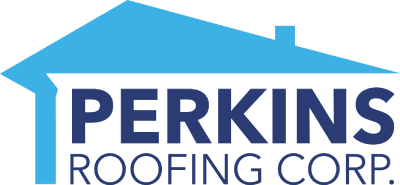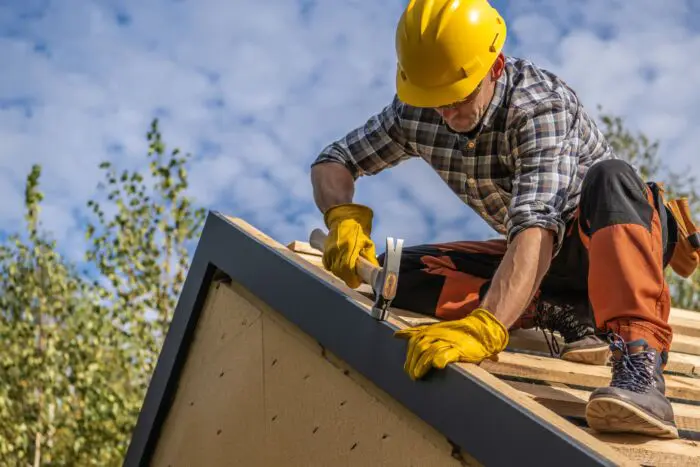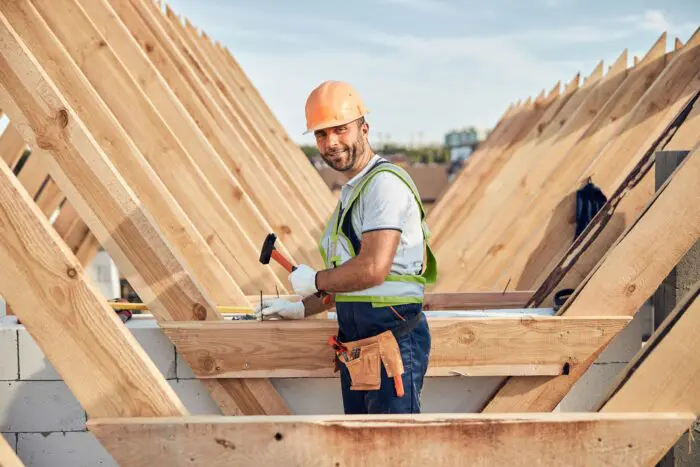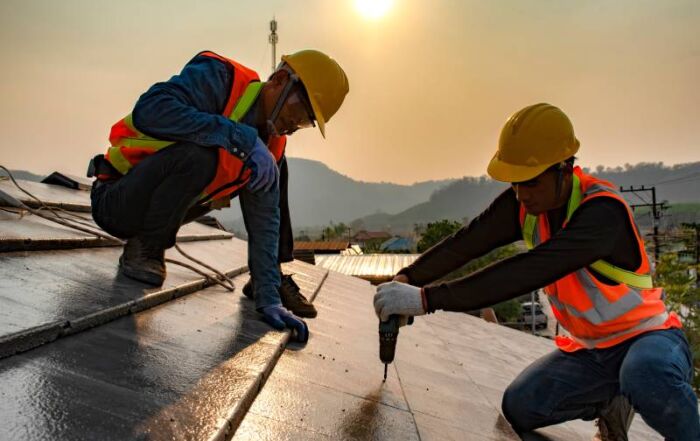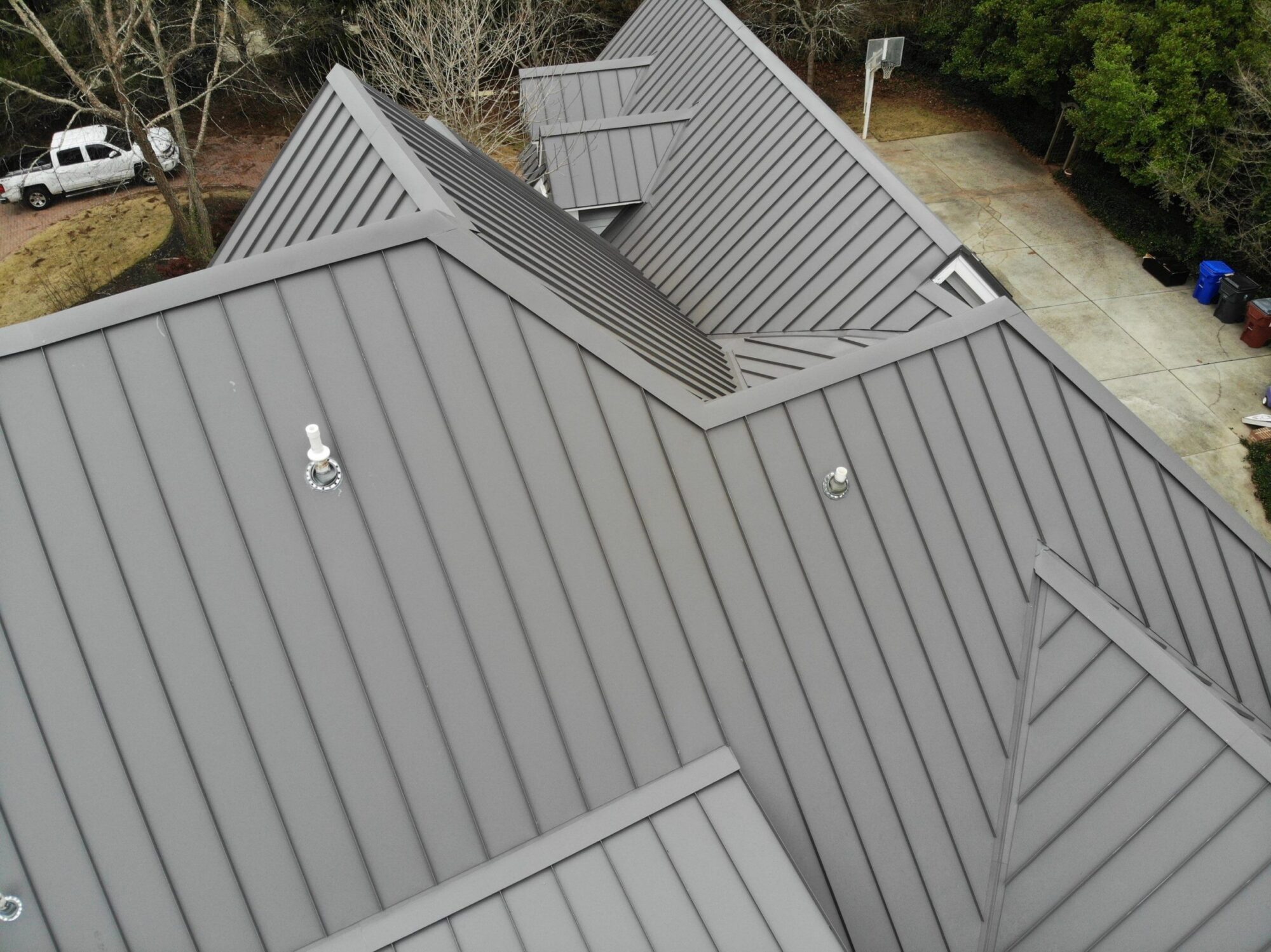
Standing Seam Metal Roof: Meaning, Types, Costs, Pros & Cons
For as long as humans need shelter, roofing materials will remain indispensable. A popular choice in roofing, the standing seam metal roof, is a testament to the unending quest for durability, environmentally-conscious solutions, and timeless visual appeal, as evident in the ever-growing array of roofing options despite the already abundant selection in the market. Although more expensive compared to other roofing materials, its durability and ROI compensate for the cost.
What is standing seam metal roofing and why should you consider it?
What Is a Standing Seam Metal Roof System?
A standing seam metal roof is a type of metal roofing referred to as a concealed fastener roof panel system, installed vertically and raised to interlock with the adjoining panel. The use of invisible fasteners makes the panels much preferable due to their improved appearance.
Additionally, the hidden fastener system prevents water or moisture from penetrating and damaging the roof so that it lasts longer. Unfortunately, this cannot be said for other types of metal roofs with noticeable fasteners.
The standing seam metal roof comes with starter lock strips in the same color as the roof to hold the metal panels to the roof edges. Expertly installed at both the eaves and rakes, these locks provide exceptional resistance against strong winds, reinforcing the roof’s durability and structural integrity. This innovative integration enhances the overall functionality of the roofing system while maintaining its aesthetic appeal.
Installed properly and well maintained, your standing seam roof should last between 50 and 70 years.
Types of Standing Seam Metal Roof
The standing seam metal roof comes in a range of selections to cater to homeowners’ choices. You can choose based on the panel’s size, color, shape, and thickness. Three types of standing seam metal roofs are:
1. Mechanical Seam
The mechanical lock profile panel unlike the snap lock requires a seam to join the roll-formed edges together. This profile panel comes in a 90-degree seam which is a single lock and a 180-degree seam which has two folds of the seam.
The former is suitable for an environment with mild weather conditions while the latter is recommended for a low slope. The mechanical seam profile is more labor intensive and therefore attracts more installation costs.
2. Snap Lock
The snap lock panel profile has their edges (referred to as male and female legs) shaped so that by simply applying pressure, they can be clipped together without seams. This reduces the time and energy spent on installing it compared to other profile panels and as a result, they are cheaper to install.
3. Nail / Fastener Flange
The nail or fastener flange is almost similar to the snap lock panel profile. The difference however is that the male leg is fastened directly to the roof deck, and the female leg is then placed above it and snapped over it so that the fastener becomes invisible.
What’s the Cost of a Standing Seam Metal Roof?
The average cost of installing a standing seam metal roof falls between $24000 to $ 42,000, reflecting factors such as roof size, material quality, and labor expenses. That puts the cost per roof square at $680-$1800. Obtaining accurate quotes from reputable contractors is essential as it allows homeowners to understand the breakdown of costs and make informed decisions. While the initial investment might seem high, standing seam systems prove to be a worthwhile expenditure in the long run. Its durability, longevity, low maintenance requirements, energy efficiency, and potential increase in property value justify the upfront cost, making it a sound investment that can save money over the roof’s lifespan.
The Pros and Cons of Standing Seam Metal Roofing
Pros
1. Longevity Due to Concept Fasteners
Generally, metal roofing sheets last longer than shingles and other roofing materials. What seems to be their major problem over time is the vulnerability of the exposed fastener systems. Thankfully, standing seam metal roofing panels are designed to counter this problem.
Visible fasteners suffer wear and tear over time due to moisture and water penetration causing the metal panels to rust. With no visible fasteners, the standing seam roofing panels will last much longer if installed properly and maintained well.
2. Quality and Warranties
For a roofing material like the standing seam metal panel, it is only right that customers demand quality and a warranty. Should the roofing material fail early, the manufacturer will be held responsible.
3. Allows Thermal Movement
The custom edges of the standing seam metal roof allow for contraction and expansion without the fasteners coming off or making sounds. The snap lock allows them to move freely.
4. Sophisticated Look
The standing seam panel also comes in copper and zinc. However, the most commonly used standing seam metal roof is steel. Regardless of the material used, they all look sleek and modern. The consistency and sophistication make them an excellent choice for all kinds of architectural designs.
5. Environmentally friendly
The content of the standing seam metal roofing material (reflexive pigment and emissive metals) dissipates sun rays and helps to cool the entire building.
Cons
1. Expensive
Although not the most expensive, standing seam metal roofing is quite expensive compared to shingles and other metals with exposed fasteners. This may not be an issue for commercial users but residential customers may need to weigh their budget before settling for it.
2. Labor Intensive
Except for the snap lock profile, the installation process is labor-intensive and time-consuming. This is why contractors charge more than they do for other roofing types.
3. Almost Impossible to Repair
Due to its installation process, this roofing type is difficult to repair as each panel will need to be unseamed from the others and replaced.
4. Cannot be used over a Flat Roof
The standing seam roofing system is not suitable for a flat roof. This is because flat surfaces do not encourage water drainage and when water is retained on the roof, it can damage the panels.
Final Thoughts
Although a standing seam metal roofing system is worth the price placed on it, your money could go to waste if you employ an inexperienced contractor to install it, in which case your insurance policy may not cover it.
The installation process is quite tedious and requires expertise. As such, only a few contractors can confidently take on the job without fear of damage. Due to the complexity of the installation process, it is essential to have contractors who possess the necessary expertise. The intricate nature of the installation requires specialized knowledge and skills to ensure the job is done correctly and accurately.
For unparalleled roofing services in South Florida, look no further than Perkins Roofing Corp. Our expertise spans various roofing options, and we take pride in offering top-notch roofing products to meet your needs. Whether it’s maintenance, repairs, or installations, our team is dedicated to delivering quality workmanship. Contact us today to explore the durability and elegance of a quality standing seam metal roof. Trust Perkins Roofing Corp for all your roofing needs.
